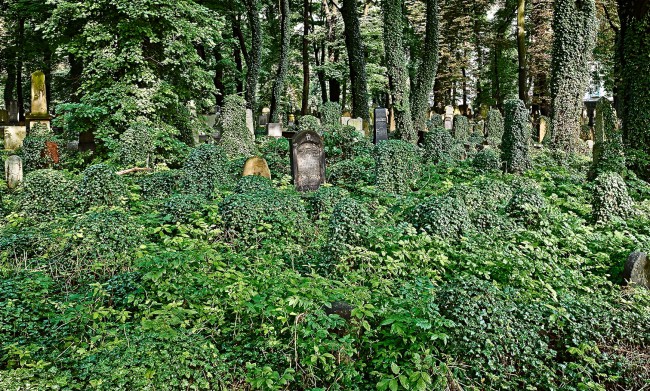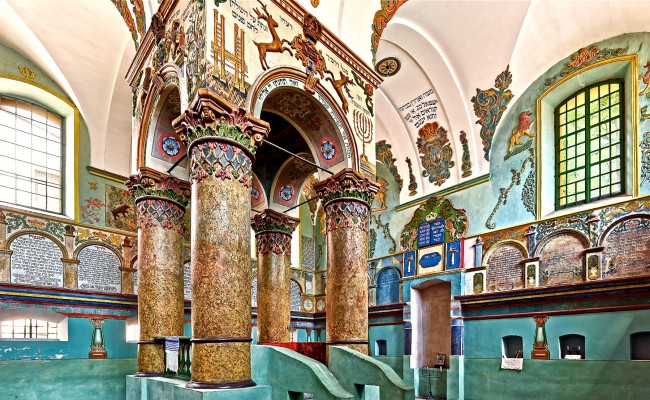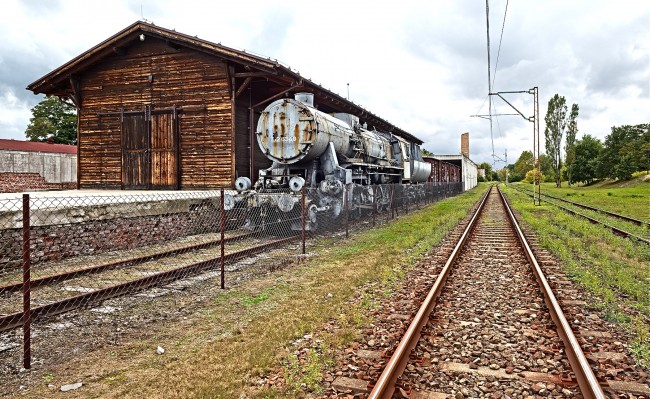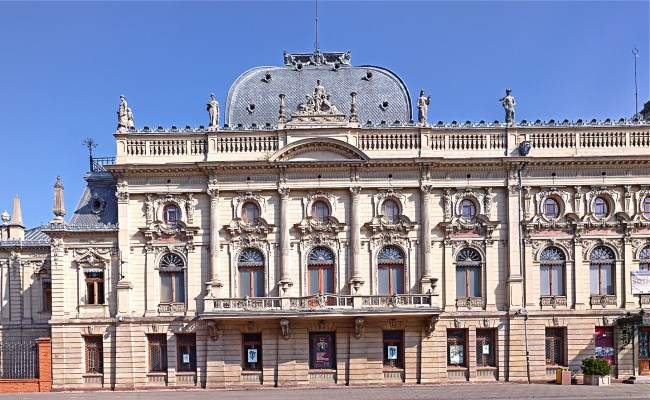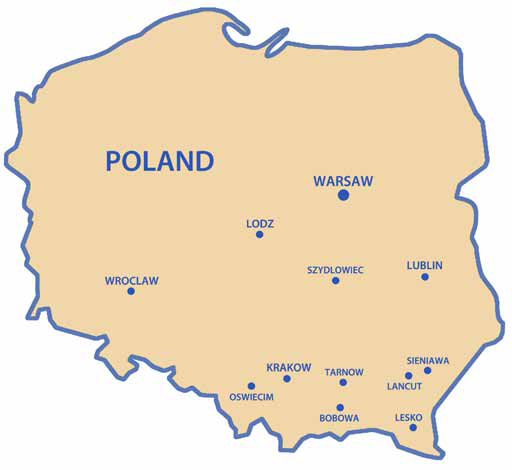As part of Holocaust Education Week in Toronto, Beth Tzedec Congregation’s Reuben and Helene Dennis Museum is hosting an exhibit by Canadian photographer David Kaufman called The Posthumous Landscape: Jewish Sites of Memory in Poland Today. Officially opened on Oct. 29, it runs until Feb. 2, 2014.
Kaufman’s visually remarkable photographs, all in luminous color, relate to Jewish life in pre-World War II P0land, where 3.3 million Jews lived.
During the course of several trips to Poland from 1992 onward, he photographed restored synagogues, buildings in former Jewish neighborhoods, cemeteries, a railway station from which Jews were deported to extermination camps, and the guard tower at Auschwitz-Birkenau.
Kaufman, who specializes in architecture-based images, has no direct family connection to Poland. But he knows the country reasonably well, is dedicated to his craft and has a keen eye for telling details.
Venturing into Kazimierz, Krakow’s historic Jewish quarter, Kaufman took a photograph of an ornate study hall that, at one point, was converted into a carpentry shop and that was abandoned in the 1980s, during the Communist era. In 1993, after years of neglect, it was renovated and turned into a center for Jewish culture.
In Tarnow, 72 kilometres east of Krakow, he photographed a former mikveh that has since become a restaurant. Designed in Moorish-style, the mikveh was the gathering site in June 1940 for the first transport to Auschwitz, which was then a camp mainly for Polish political prisoners. Tarnow no longer has a Jewish community, but since 1996, it has staged an annual Jewish cultural festival.
The weathered building on 9 Brzeska Street, in Warsaw’s Praga district, was formerly a public school whose entire student body was Jewish before the war. Unlike much of Warsaw, Praga was not destroyed by the Nazis, and as a result, many of its streets retain a pre-war character.
Prior to the Holocaust, one-third of Lodz’s population was Jewish. My parents, David and Genya, were residents of the city until its ghetto was liquidated by the Nazis in August 1944.
Arguably, its most famous burgher was industrialist Israel Kalmanowicz Poznanski(1833-1900). In the 1870s, he began building an enormous textile factory, which would employ more than 6,000 workers. Having grown wealthy, he built a Neo-Baroque palace adjoining the factory property. Kaufman’s photographs of the palace, a city museum since 1975, and of the factory, now a mall and hotel complex, summon up a glorious era in Poland’s industrial history. (Interestingly enough, Poznanski’s great granddaughter, Alice, is the wife of Quebec’s former premier, Jacques Parizeau).
Travelling to the outskirts of Lodz, Kaufman visited the Radegast train station, from which 200,000 Jews and Roma were shipped to Auschwitz and Chelmno from 1942 onward. A memorial complex, consisting in part of a German locomotive and cars, was opened here in 2005 to honor victims of Nazi barbarity.
Kaufman’s photograph of Fire Hall Field, in Lodz, also summons up dark memories. It was here, on Sept. 4, 1942, that ghetto elder Chaim Rumkowski delivered a chilling speech in which he urged families to give up their children to the Nazis so as to save the remaining Jews of Lodz.
Since Kaufman has visited a number of Jewish cemeteries throughout Poland, they figure prominently in his exhibit.
He takes us to cemeteries in Kazimierz,, Krakow, Lodz, Sieniawa, Lesko, Lublin, Warsaw and Wroclaw. Some are overgrown. Still others are in better condition. All remind us of a Jewish community whose history goes back 1,000 years.
Kaufman’s photographs of restored synagogues in Bobov, Krakow and Lancut are amazingly rich in detail. A photograph of a former shul in Lesko, in southeastern Poland, is simply stunning.
Kaufman’s exhibit, at once sad and soaring in mood, pays tribute to a venerable community that has left a profound and lasting legacy in Poland.
